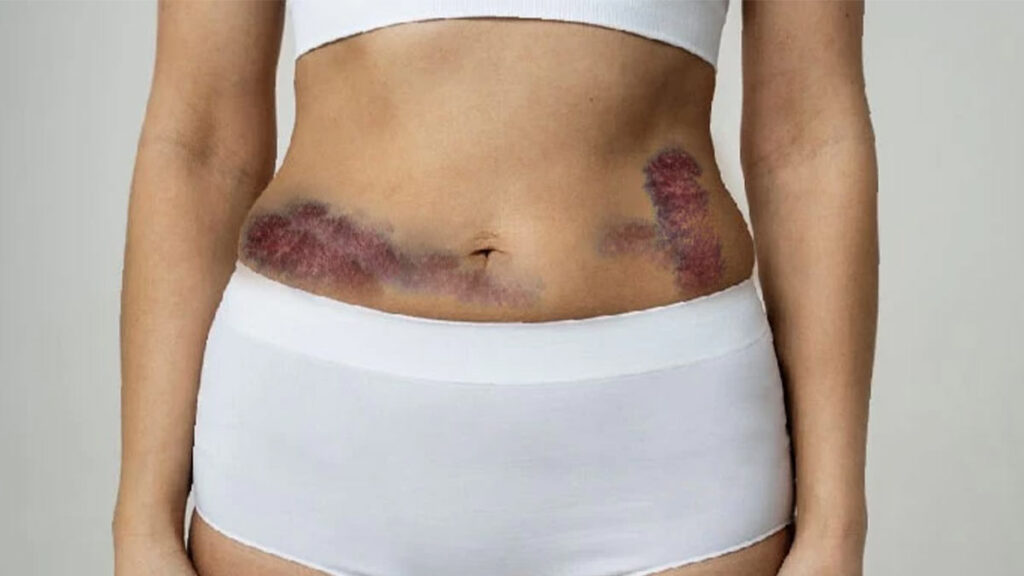Liposuction is among the most popular cosmetic surgeries performed worldwide. It offers an effective way to remove localized fat deposits and sculpt the body. However, like all surgical procedures, liposuction carries certain side effects and bruising is one of the most common. Understanding the reasons for bruising after liposuction helps patients set realistic expectations, manage recovery better, and ensure that their healing process proceeds as smoothly as possible.
Why Bruising Happens After Liposuction
Bruising, medically known as ecchymosis, occurs when small blood vessels(capillaries) beneath the skin are damaged during surgery. The procedure involves the insertion of a cannula a thin tube used to suction out fat cells which inevitably disrupts some blood vessels. The leaked blood from these vessels pools under the skin, resulting in visible discoloration. This process is normal and typically temporary, but understanding the reasons for bruising after liposuction can help minimize its appearance and duration.
Several factors contribute to the formation and severity of bruising, including surgical technique, patient health, and postoperative care. Each of these plays a role in how the body responds to trauma and how quickly it heals.
Surgical Technique and Experience of the Surgeon
One of the primary reasons for bruising after liposuction is the technique used during the operation. Surgeons with advanced skills and experience tend to cause less trauma to surrounding tissues. They use smaller cannulas, apply gentle suction pressure, and work in controlled movements. Conversely, an aggressive or poorly executed technique can lead to greater tissue damage, increasing the likelihood and intensity of bruising.
Additionally, modern liposuction methods such as tumescent liposuction, laser-assisted, or ultrasound-assisted techniques have been designed to minimize trauma. These innovations use smaller incisions and specialized tools to reduce bleeding and inflammation. Patients who opt for these updated procedures often report significantly less bruising than those undergoing traditional methods.
Interestingly, advancements in other medical fields, such as Exploring 3D technology in the production of compact garments treatment, have inspired similar precision-based improvements in cosmetic surgery tools. The ability to model soft tissue and simulate outcomes allows surgeons to refine their technique even further, potentially reducing post-surgical bruising.
Individual Health and Skin Type
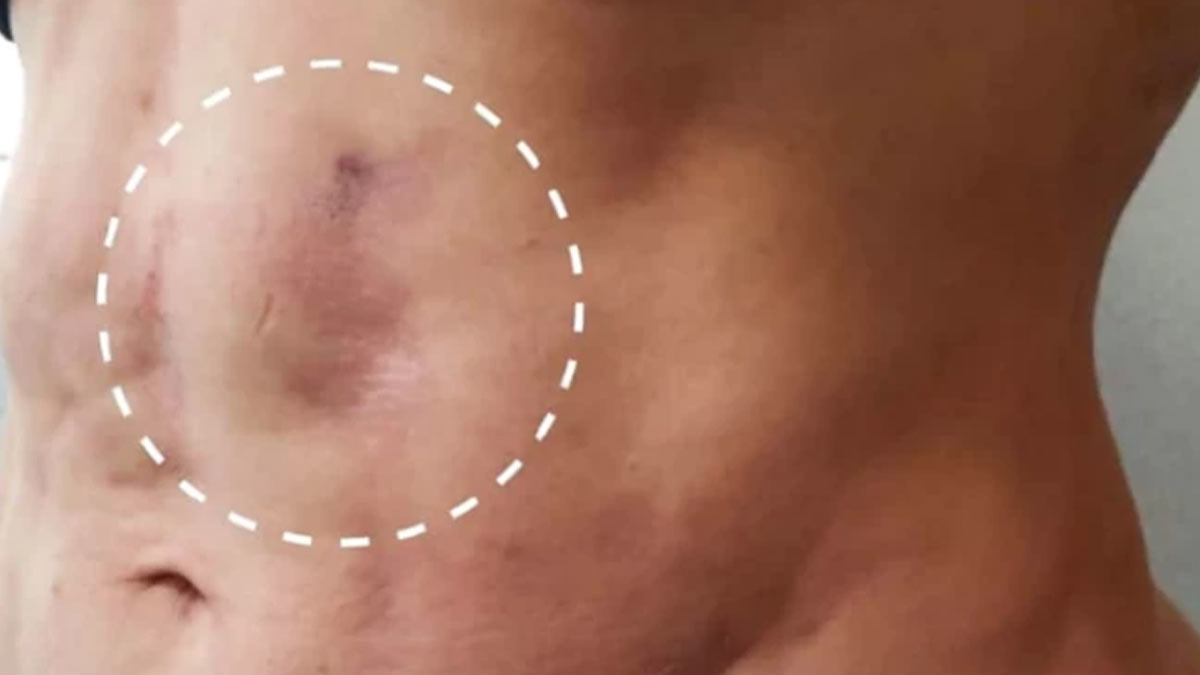
Every person’s body responds differently to surgical trauma. Factors like skin thickness, vascular fragility, and overall health determine how easily bruising appears. For example, individuals with thinner or fair skin may notice bruises more prominently than those with darker or thicker skin. Moreover, people with underlying conditions that affect blood clotting such as anemia, vitamin K deficiency, or the use of anticoagulant medications are more prone to bruising.
Good nutrition plays a vital role in healing. Vitamins C and K, along with adequate protein intake, are essential for strong blood vessels and rapid tissue repair. Therefore, maintaining a balanced diet before and after surgery can help minimize one of the most common reasons for bruising after liposuction.
The Role of Medications and Supplements
Many patients are unaware that everyday medications and herbal supplements can contribute to bruising. Blood thinners such as aspirin, ibuprofen, and certain omega-3 supplements can reduce the blood’s ability to clot effectively. As a result, even minimal trauma during liposuction may lead to visible bruises. Surgeons often advise discontinuing such medications one to two weeks before surgery(if medically safe) to reduce the reasons for bruising after liposuction linked to clotting interference.
Patients should always inform their doctor of all medications, supplements, and herbal remedies they are taking. Transparency in this area can make a significant difference in postoperative recovery and bruise management.
Compression Garments and Postoperative Care
After liposuction, proper postoperative care is essential to control bruising. One of the most effective measures is the use of compression garments. These garments apply gentle, consistent pressure to the treated areas, reducing fluid buildup, minimizing swelling, and supporting the reattachment of tissues. Wearing compression garments correctly can also speed up the reabsorption of leaked blood under the skin directly addressing one of the most visible reasons for bruising after liposuction.
Interestingly, lessons learned from orthopedic recovery such as the Reasons to wear compression garments after a leg fracture have greatly influenced their use in cosmetic surgery. In both cases, controlled compression stabilizes tissues, enhances blood circulation, and minimizes bruising and swelling.
Timing and Duration of Bruising
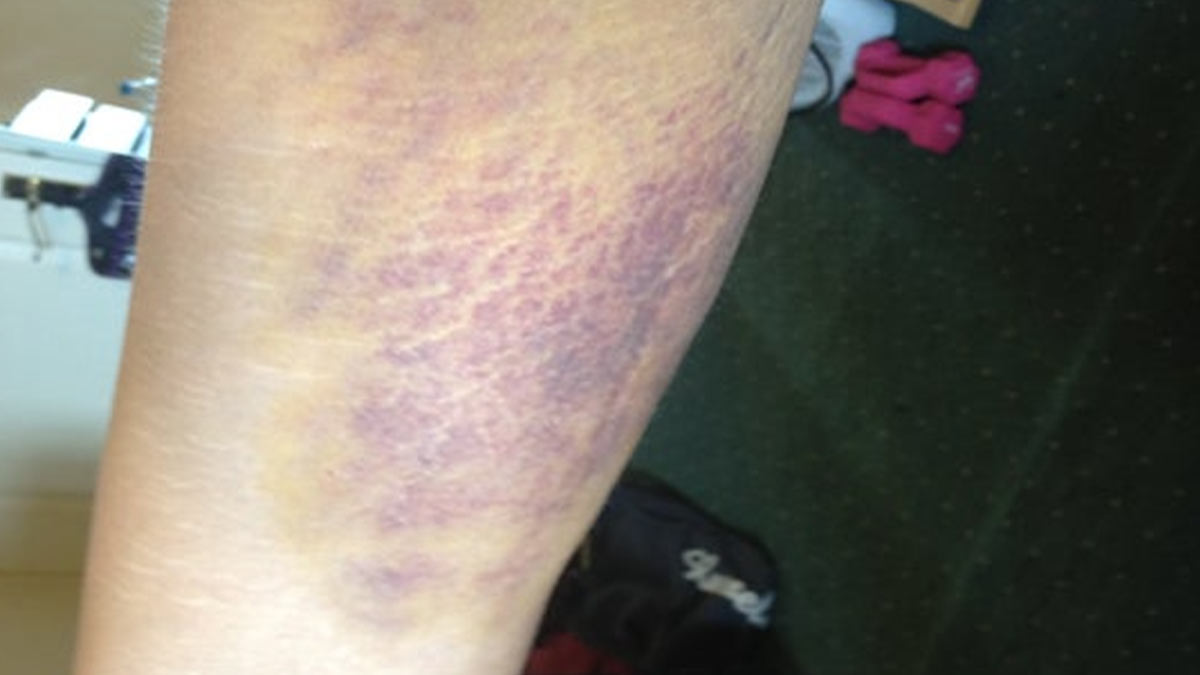
Most patients experience bruising for one to three weeks following surgery, though the duration varies depending on the extent of liposuction and personal healing speed. The initial dark purple or blue coloration gradually fades to green and yellow as the blood pigments are broken down and reabsorbed by the body.
In general, small treatment areas like the chin or arms heal faster than larger regions such as the abdomen or thighs. Keeping the treated area elevated when possible, maintaining hydration, and avoiding strenuous activity can all help accelerate this process. Nonetheless, patience is key — bruising is a natural part of recovery and usually resolves completely with time.
Influence of Compression Technology
Modern compression garment design has evolved dramatically, helping improve healing outcomes after cosmetic surgery. Innovations inspired by athletic wear and medical rehabilitation have made garments more breathable, elastic, and anatomically precise. The Benefits of Compression Garments go far beyond reducing swelling they improve lymphatic drainage, enhance skin adherence, and minimize irregularities in body contour after liposuction.
By stabilizing tissues and maintaining uniform pressure, these garments reduce capillary leakage, thus directly addressing one of the physical reasons for bruising after liposuction. Patients who commit to wearing their compression garments as instructed by their surgeon generally experience less discoloration and a faster return to normal appearance.
Hydration and Circulation
Proper blood circulation and hydration are crucial in preventing excessive bruising. Dehydration thickens the blood, making it more prone to pooling under the skin after trauma. Conversely, adequate hydration helps the body flush out waste and repair damaged capillaries. Gentle walking and light movement after the first few days of surgery can stimulate circulation and prevent blood from stagnating in the treated areas.
Patients who remain sedentary for too long may find their bruising worsens or takes longer to resolve. Thus, understanding both physiological and lifestyle reasons for bruising after liposuction is critical for a smooth recovery.
The Connection Between Body Temperature and Healing
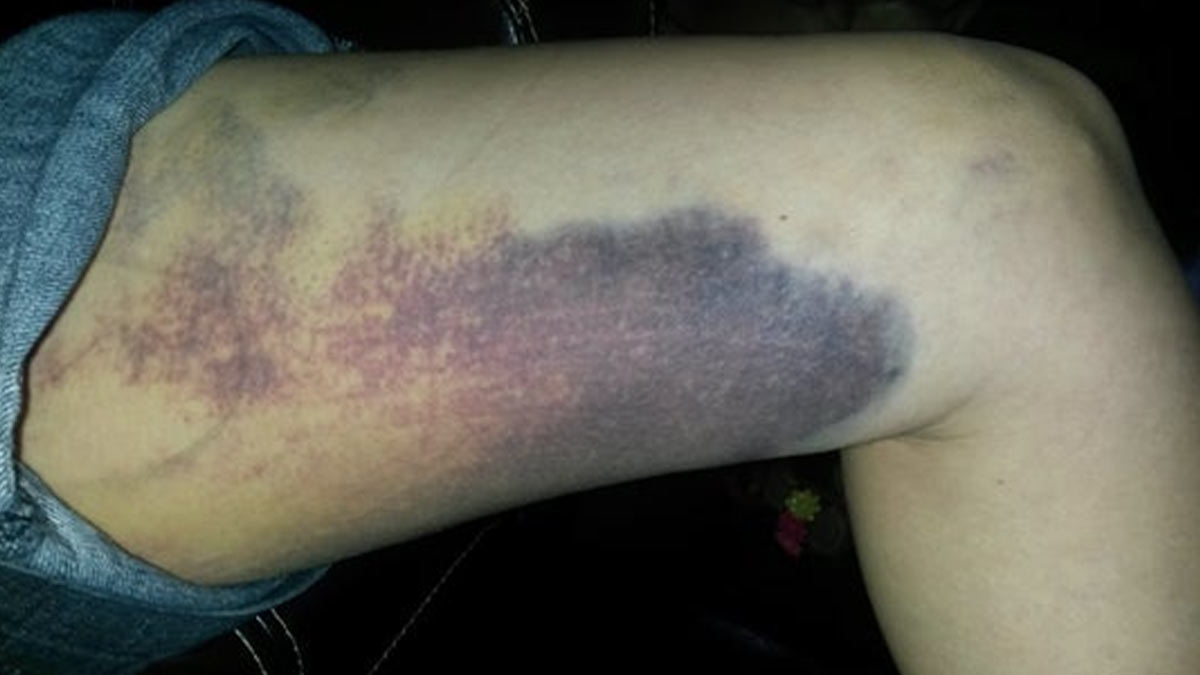
Interestingly, body temperature management also affects bruising. Applying cold compresses during the first 48 hours after liposuction helps constrict blood vessels, preventing additional bleeding under the skin. However, excessive cold exposure can impair blood flow and slow down healing. On the other hand, gentle warmth applied after the third day can promote circulation and accelerate bruise fading.
This temperature balance, though subtle, is one of the less obvious reasons for bruising after liposuction to consider when planning your postoperative care.
Understanding the Role of Lymphatic Drainage
Another major factor in bruise reduction is the efficiency of the lymphatic system. This network of vessels helps drain fluids and metabolic waste from tissues. After liposuction, lymphatic flow can become sluggish, leading to prolonged swelling and discoloration. Gentle lymphatic drainage massages, performed by trained specialists, can help restore circulation and minimize visible bruising.
These massages are often recommended within one week post-surgery and are most effective when combined with compression therapy. They enhance the body’s natural detox process and support faster recovery.
Choosing the Right Garment Type
Selecting the proper compression garment plays a huge role in minimizing bruising. There are many options available, each designed for specific body regions and recovery goals. For example, abdominal binders, thigh-high garments, and full body suits provide different levels of pressure and coverage. The article Types of Medical Compression Garments | What is the Use of Each? provides valuable insights into how to choose the ideal product.
The correct fit ensures consistent pressure without cutting off circulation. Poorly fitted garments, on the other hand, can cause uneven bruising or slow down healing. Surgeons often recommend professional fitting to ensure the best outcome.
Lifestyle Factors That Influence Bruising
Smoking, alcohol consumption, and stress can all affect blood circulation and healing efficiency. Nicotine constricts blood vessels, reducing oxygen supply to tissues. Alcohol, meanwhile, thins the blood, increasing the risk of bruising and bleeding. Patients are advised to avoid both for at least two weeks before and after surgery to minimize the reasons for bruising after liposuction that are lifestyle-related.
Getting enough sleep and reducing stress levels also help the body focus on repair. The calmer your system, the more effectively it can heal microscopic capillary injuries caused by the cannula movement.
When to Be Concerned About Bruising?
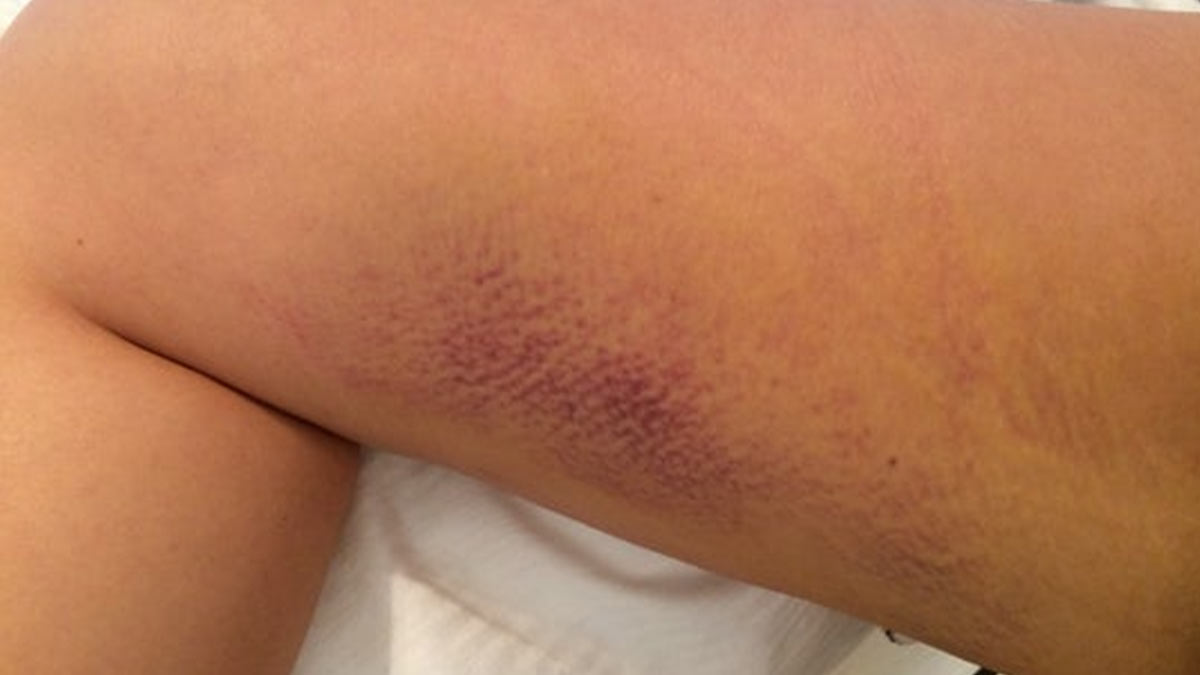
While mild to moderate bruising is normal, excessive or persistent bruising can indicate complications. If bruises expand rapidly, become painful, or are accompanied by swelling, warmth, or fever, it’s important to contact your surgeon immediately. These signs may point to infection, hematoma (internal bleeding), or other issues requiring medical attention.
Thankfully, serious complications are rare when patients follow postoperative guidelines carefully. Most bruising is harmless and temporary, resolving within a few weeks without intervention.
Final Thoughts
Understanding the reasons for bruising after liposuction empowers patients to approach the procedure with realistic expectations and confidence. Factors such as surgical technique, personal health, and postoperative care all play interconnected roles in how the body heals. From the use of advanced surgical tools to the proper application of compression garments, every step contributes to a smoother recovery and more satisfying results.
By taking proactive measures such as maintaining good nutrition, wearing appropriate compression garments, and following medical advice patients can significantly reduce their downtime and discomfort. Moreover, as modern technology continues to improve the precision of both surgery and recovery tools, we can expect fewer side effects and faster healing for future liposuction patients.
Ultimately, bruising is a natural response of the body’s healing mechanism. With knowledge of the key reasons for bruising after liposuction, patients can view it not as a setback but as part of the journey toward a more sculpted, confident version of themselves.







